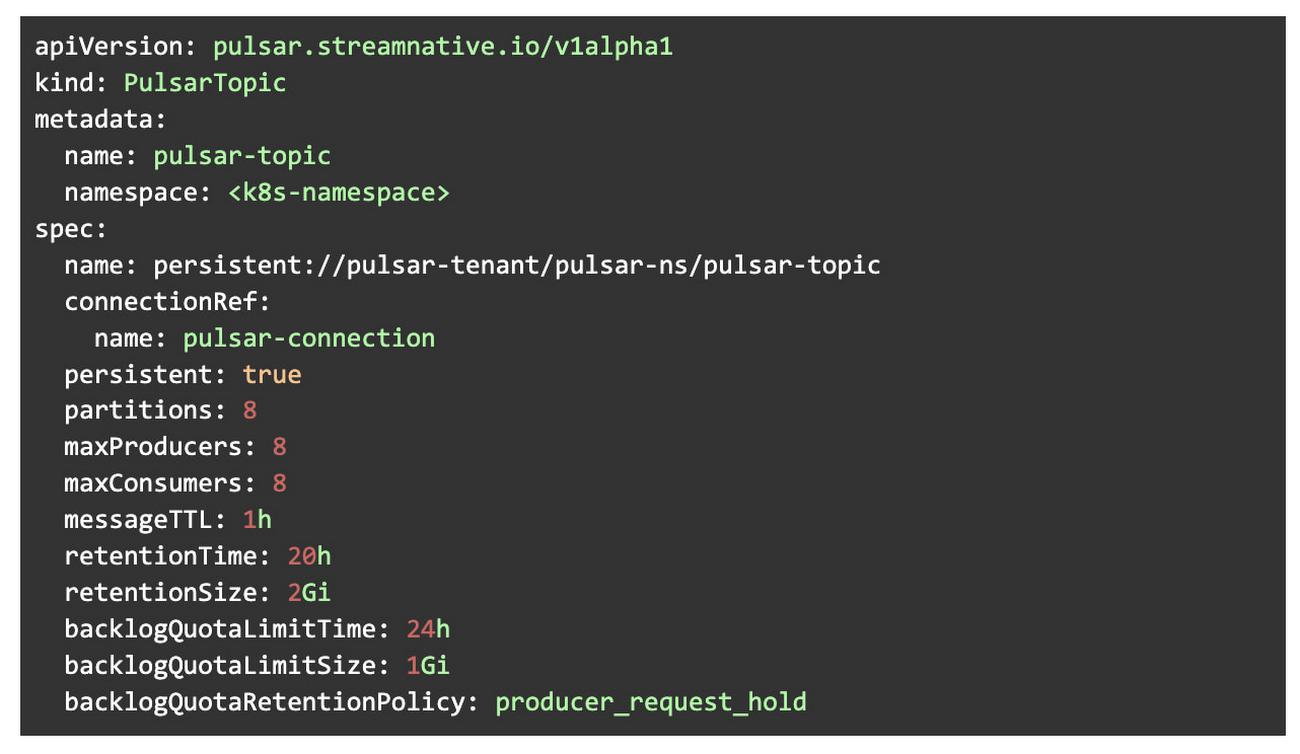StreamNative, a company founded by the original developers of Apache Pulsar and Apache BookKeeper, is partnering Google Cloud to build a streaming platform on open source technologies. We are dedicated to helping businesses generate maximum value from their enterprise data by offering effortless ways to realize real-time data streaming. Following the release of StreamNative Cloud in August 2020, which provides scalable and reliable Pulsar-Cluster-as-a-Service, we introduced StreamNative Cloud for Kafka. This is to enable a seamless switch between Kafka API and Pulsar. We then launched StreamNative Platform to support global event streaming data platforms in multi-cloud and hybrid-cloud environments.
From our partners:
- Single API: When building a complex event-driven application, it traditionally requires linking multiple systems to support queuing, streaming and table semantics. Apache Pulsar frees developers from the headache of managing multiple APIs by offering one single API that supports all messaging-related workloads.
- Multi-tenancy: With the built-in multi-tenancy feature, Apache Pulsar enables secure data sharing across different departments with one global cluster. This architecture not only helps reduce infrastructure costs, but also avoids data silos.
- Simplified application architecture: Pulsar clusters can scale to millions of topics while delivering consistent performance, which means that developers don’t have to restructure their applications when the number of topic-partitions surpasses hundreds. The application architecture can therefore be simplified.
- Geo-replication: Apache Pulsar supports both synchronous and asynchronous geo-replication out-of-the-box, which makes building event-driven applications in multi-cloud and hybrid-cloud environments very easy.
Facilitating integration between Apache Pulsar and Google Cloud
To allow our customers to fully enjoy the benefits of Apache Pulsar, we’ve been working on expanding the Apache Pulsar ecosystem by improving the integration between Apache Pulsar and powerful cloud platforms like Google Cloud. In mid-2022, we added Google Cloud Pub/Sub Connector for Apache Pulsar, which enables seamless data replication between Pub/Sub and Apache Pulsar, and Google Cloud BigQuery Sink Connector for Apache Pulsar, which synchronizes Pulsar data to BigQuery in real time, to the Apache Pulsar ecosystem.
Google Cloud Pub/Sub Connector for Apache Pulsar uses Pulsar IO components to realize fully-featured messaging and streaming between Pub/Sub and Apache Pulsar, which has its own distinctive features. Using Pub/Sub and Apache Pulsar at the same time enables developers to realize comprehensive data streaming features on their applications. However, it requires significant development effort to establish seamless integration between the two tools, because data synchronization between different messaging systems depends on the functioning of applications. When applications stop working, the message data cannot be passed on to the other system.
Our connector solves this problem by fully integrating with Pulsar’s system. There are two ways to import and export data between Pub/Sub and Pulsar. The first, is the Google Cloud Pub/Sub source that feeds data from Pub/Sub topics and writes data to Pulsar topics. Alternatively, the Google Cloud Pub/Sub sink can pull data from Pulsar topics and persist data to Pub/Sub topics. Using Google Cloud Pub/Sub Connector for Apache Pulsar brings three key advantages:
- Code-free integration: No code-writing is needed to move data between Apache Pulsar and Pub/Sub.
- High scalability: The connector can be run on both standalone and distributed nodes, which allows developers to build reactive data pipelines in real time to meet operational needs.
- Less DevOps resources required: The DevOps workloads of setting up data synchronization are greatly reduced, which translates into more resources to be invested in unleashing the value of data.
By using the BigQuery Sink Connector for Apache Pulsar, organizations can write data from Pulsar directly to BigQuery. This is unlike before, where developers could only use Cloud Storage Sink Connector for Pulsar to move data to Cloud Storage, and then query the imported data with external tables in BigQuery which had many limitations, including low query performance and no support for clustered tables.
Pulling data from Pulsar topics and persisting data to BigQuery tables, our BigQuery sink connector supports real-time data synchronization between Apache Pulsar and BigQuery. Just like our Pub/Sub connector, Google Cloud BigQuery Sink Connector for Apache Pulsar is a low-code solution that supports high scalability and greatly reduces DevOps workloads. Furthermore, our BigQuery connector possesses the Auto Schema feature, which automatically creates and updates BigQuery table structures based on the Pulsar topic schemas to ensure smooth and continuous data synchronization.
Simplifying Pulsar resource management on Kubernetes
All the products of StreamNative are built on Kubernetes, and we’ve been developing tools that can simplify resource management on Kubernetes platforms like Google Cloud Kubernetes (GKE). In August 2022, we introduced Pulsar Resources Operator for Kubernetes, which is an independent controller that provides automatic full lifecycle management for Pulsar resources on Kubernetes.
Pulsar Resources Operator uses manifest files to manage Pulsar resources, which allows developers to get and edit resource policies through the Topic Custom Resources that render the full field information of Pulsar policies. It enables easier Pulsar resource management compared with using command line interface (CLI) tools, because developers no longer need to remember numerous commands and flags to retrieve policy information. Key advantages of using Pulsar Resources Operator for Kubernetes include:
- Easy creation of Pulsar resources: By applying manifest files, developers can swiftly initialize basic Pulsar resources in their continuous integration (CI) workflows when creating a new Pulsar cluster.
- Full integration with Helm: Helm is widely used as a package management tool in cloud-native environments. Pulsar Resource Operator can seamlessly integrate with Helm, which allows developers to manage their Pulsar resources through Helm templates.

How you can contribute
With the release of Google Cloud Pub/Sub Connector for Apache Pulsar, Google Cloud BigQuery Sink Connector for Apache Pulsar, and Pulsar Resources Operator for Kubernetes, we have unlocked the application potential of open tools like Apache Pulsar by making them simpler to build, easier to manage, and extended their capabilities. Now, developers can build and run Pulsar clusters more efficiently and maximize the value of their enterprise data.
These three tools are community-driven services and have their source codes hosted in the StreamNative GitHub repository. Our team welcomes all types of contributions for the evolution of our tools. We’re always keen to receive feature requests, bug reports and documentation inquiry through GitHub, emails or Twitter.
By: Sijie Guo (Apache Pulsar PMC Member, Co-Founder and CEO of StreamNative)
Source: Google Cloud Blog
For enquiries, product placements, sponsorships, and collaborations, connect with us at [email protected]. We'd love to hear from you!
Our humans need coffee too! Your support is highly appreciated, thank you!








